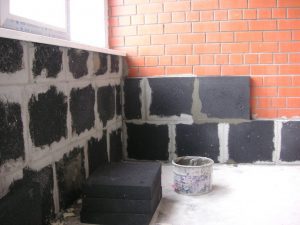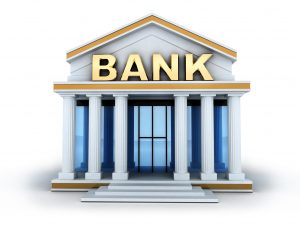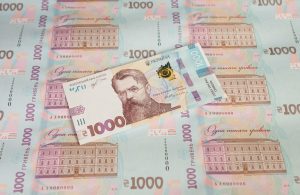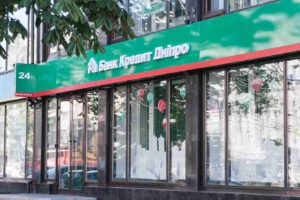
In the period from May 1 to May 12, 2020, state-owned banks issued UAH 67 million of energy efficiency financing to those who plan to improve energy efficiency of their homes in 2020, according to the Energy Reform Internet portal.
State Agency of Ukraine on Energy Efficiency and Energy Saving said on Wednesday, May 13, that last week financing was received by another 1,544 households and some 122 associations of multi-apartment block co-owners took advantage of the program, namely, more than UAH 35 million for thermal insulation of apartment buildings, about UAH 32 million for energy efficient measures in private households, UAH 900,000 for solid fuel boilers.
“In fact, more energy efficiency financing was issued for a week than for the entire month of April, which amounted to UAH 63 million. More than UAH 130 million of financing for energy efficiency purposes has been issued to the population and the associations of multi-apartment block co-owners since the beginning of the program,” the agency said.

The single counterparty exposure limit (H7, no more than 25%) was violated by Ukreximbank (36.1%), Industrialbank (58.16%), Prominvestbank (62.81%), and Misto Bank (42.73%) as of April 1, 2020, the National Bank of Ukraine (NBU) has reported.
The related party transactions exposure limit (H9, no more than 25%) was violated by FUIB (30.12%), Megabank (63.65%), Bank for Investments and Savings (78.05%), First Investment Bank (73.38%), and Unex Bank (31.50%).
The limit on bank total long open FX position (L13-1, no more than 10%) was violated by Prominvestbank (112.87%), Oschadbank (125.49%), PrivatBank (167.8%) and Industrialbank (19.17%).
The limit on bank total short open FX position (L13-2, no more than 10%) was violated by Prominvestbank (104.8%).
The liquidity coverage ratio (LCR) for all currencies (at least 100%) was violated by Misto bank (78.83%).
As for the adequacy ratio for core capital (H3, at least 7%), the NBU said that considering the requirements to raising the capital conservation buffer, the common equity adequacy ratio (N3) as of the beginning of 2020 should account for at least 7.625%.

State-controlled Oschadbank and Ukreximbank (Kyiv) have signed an agreement on cooperation with the State Agency of Ukraine on Energy Efficiency and Energy Saving under the program of energy efficiency financing for the population in 2020.
According to a statement on the website of Ukreximbank, the financial institution will provide energy efficiency financing for individuals for energy efficient measures in private houses with the possibility of receiving compensation for 35% of the loan amount, but not more than UAH 14,000.
In order to obtain advice from a loan specialist and determine the time of a visit to a bank office, individuals need to contact the nearest office of the financial institution by telephone in advance. Such measures have been taken to prevent the spread of coronavirus (COVID-19) and minimize contacts between citizens during the quarantine period, the bank said in the statement.
According to the agency’s statement on its Facebook page on Thursday, April 16, Oschadbank will provide energy efficiency financing to individuals for the purchase of gas boilers with solid fuel, energy efficient materials and equipment for private houses, as well as for associations of multi-apartment block co-owners for the introduction of energy-efficient measures multi-apartment buildings.

The potential reintegration of Donbas might add up to 1.5 percentage points (pp) to Ukraine’s GDP growth during two or three years, Bank of America (BofA) has said in its analytical review.
BofA said that the potential integration of territories could increase nominal GDP by 3-5 pp and accelerate growth by 1-1.5 pp in the period after the post-war recovery.
The analysts said that the post-war recovery might be partially financed with external donor assistance.
Both Donetsk and Luhansk regions accounted for more than 15.7% of Ukraine’s GDP in 2012, before the war. The contribution of these regions, still under Ukrainian control, fell to about 12.7% of GDP in 2017. BofA believes that this might indicate a one-time increase in relation to nominal GDP values of at least 3%.
According to the analysts, the normalization of economic relations with the region could accelerate the growth of real GDP in the first year by 0.5 pp.

Ukrainian banks in the fourth quarter of 2019 reduced interest rates on hryvnia loans for businesses by 2.4 percentage points (p.p.), to 15.7% per annum, following a reduction in the refinancing rate by the National Bank of Ukraine (NBU). According to the banking sector survey posted on the National Bank’s website, the reduction in the cost of hryvnia loans for individuals was less noticeable: in the fourth quarter of 2019 the rates fell by 0.5 percentage points, to 33.6% per annum.
At the same time, according to the document, the rates on foreign currency loans to business entities are at a historically low level of 4.6% in December 2019.
The report also notes that the rates on deposits of individuals began to decline only in December, following the reduction in rates by state banks.
“During the year, state banks kept deposit rates at a high level due to inertia in the management of liabilities and assets and legal risks of PrivatBank,” the document says.
So, according to the report, the value of 12-month hryvnia deposits of individuals in the fourth quarter of 2019 decreased by 0.7 percentage points, to 15.1% per annum, in January 2020 it continued to decline by 1.1 percentage points, and in the first week of February by another 1 percentage point, to 13% per annum.
At the same time, the value of 12-month household deposits in U.S. dollars for the fourth quarter of 2019 decreased by 0.6 percentage points, to 2.6% per annum, and in 2020 by another 0.7 percentage points.
In addition, according to the document, the cost of hryvnia funds of corporations during the fourth quarter of 2019 fell by 2.7 percentage points, to 10.3% per annum.

Work on a possible deal to acquire Credit Dnipro Bank by Oleksandr Yaroslavsky from Victor Pinchuk is ongoing. “Work is ongoing. It will be a good business, if you manage to buy. There is experience, you know that we probably have the most successful experience in working in the financial sector with UkrSibbank,” Yaroslavsky told Interfax-Ukraine at the Ukrainian House in Davos, organized by the Pinchuk Foundation, WNISEF and Horizon Capital.
According to him, with the proper operation of the bank, the need for its constant capitalization by the shareholder will disappear.
Yaroslavsky also said that he was ready to take part in large privatization, but so far the facilities offered by the State Property Fund have a lot of problems. “Everything sounds so good, but when you know the inside situation, it doesn’t look very good,” the businessman said.
In particular, with the case of the United Mining and Chemical Company, he pointed out the need to deal with property issues, in the case of the Odesa Port-Side Plant, there is a debt of $250 million to the structures of Dmytro Firtash.
“Elektrotyazhmash is also an interesting enterprise, but it is unclear in what condition it is. And 85% of the market is Russia,” Yaroslavsky added.